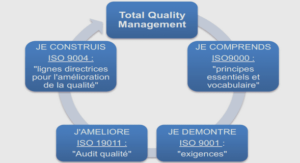PHONOLOGICAL STUDY OF THE DIALECTS OF SEEREER SIIN: THE CASE OF „‟OOL‟‟ AND „‟SINGANDUM‟‟
METHODOLOGICAL FRAMEWORK OF DATA COLLECTING AND DATA ANALYSIS
This Master Thesis has been written on the basis of many complementary approaches. First of all, we have focused on bibliographical researches which concern the library of the English department to pick up documents. At that place, we could find documents or books relative to our topic, in order to have an overview of the basis of our subject. We also got in touch with some students who helped us correct many grammar, lexical and structural mistakes. Then, some teachers help us to delimit our topic by giving us documents and show us how to write a good “Mémoire” meaning the methodology we will use to have a good work. The central library was our main place of research; there, we could find any document we need in order to deeper our researches. In top of that, we also used internet to better understand and also to delimit our subject. The sociolinguistics study which is the subject of this paper requires specific linguistics books. Therefore we went to many libraries like that of the English department, that of IFAN(Institut Fondamental d‟Afrique Noire), CLAD(Centre de Linguistique Appliqué de Dakar) etc to find books or other written materials that deal with the study of Seereer that is to say documents relevant to our topic. Whenever we went through the internet to get electronic documents also related to our subject and take into account the helpful pieces of our predecessors. After writing the all dissertation we submitted it to our supervisor for the correction of certain mistakes.
LINGUISTIC STATEMENT OF SEEREER
Seereer as a Senegalese language exists in many areas throughout the country and also in the Diaspora. However from Dakar to Thiés, going down to Sine-Saloum but also In Baol and the Islands of Saloum we find seereer ethnic groups who speak the Seereer languages. Then some descriptions and localizations are done by many researchers who tend to delimit the Seereer world. In fact, the situation of the Seereer is so difficult to be explained clearly because of many migrations they did. Then according to Pinet LAPRADE, the Seereer came from the south. All these works we are to take as illustrations explain the statement of Seereer and tend to delimit its world from different aspects. So, Ousmane Semou NDIAYE in Diversité et Unicité Séréres: l‟exemple de la région de Thiés, states that „‟parti de l‟est en logeant la frange Saharienne, le Sérére arriva sur la rive droite du Sénégal après un séjour dans la boucle du Niger au royaume de Koukia‟‟in the same line he explains also that „‟en gros, les Séréres se répartissent ainsi du sud au nord. 1-Au sud-ouest les Sine-sine de Palmarin Joal à Thiadiaye, Tasset, Babak sud de Thiés, le long de la mer au nord de joal se sont installés des Niominkas et des Saloum-saloum du Loog chassés de leurs pays par les guerres entre Maba et Saloum Samba Laobé Fall (Ngasobil, Dianda, Mbodiéne). He also continues by saying that 2-Les dieghemes de la cote des environs de Mbour vers l‟intérieur (Warang, Mbour, Soussane)8 . Then we can suggest that the Seereer world and its situations are difficult to be understood because of its longevity. So the map we are going to draw at the middle of this page will help you understand more the real situation of Seereer inside the country but also all the ways they took in order to settle in Senegal which is considered to be the only country where we found Seereer in general. 8 OUSMANE SEMOU NDIAYE: Diversité et Unicité Seereer : l’exemple de la region de Thiés : article dans éthiopiques numéro
MAP OF THE SITUATION OF SEEREER ETHNIC GROUP
In fact it is very important to understand the situation of the Seereer world because a long time ago, Seereer existed in history. So, according to VILLARD in his Histoire du Senegal (1940) writes that „‟Le bloc Seereer est peut étre le plus ancien groupe ethnique du Senegal‟‟ meaning that „‟the Seereer block is perhaps the most ancient ethnic group in Senegal‟‟9 9 VILLARD in Histoire du Sénégal 1940 “le bloc Seereer est peut etre le plus ancien groupe ethnique du Senegal” 16 In that line, we can mention that Seereer existed a long time in Senegal before the arrival of any ethnic group which show typically that Seereer people occupy most of the Senegalese‟s area. Although, many of these areas are subdivided in small areas and got names for each of them. For example taking the Fatick region which is the capital area of Seereer meaning most of Seereer people are originated from there, we can cite many areas like „‟Gnaawuul‟‟ or „‟Gnawoul‟‟ in more narrow term including the area of Bikol, o Ngouy, Sobeme, sanghare and so on. Thus the region of Petite-Cote also known as Saloum islands including mostly the area of Niodior, Juwala, Dionwar, Falia without forgetting the Gandul area populated by the Niominkas who are said to be a subgroup of Seereer. Furthermore, they have an aristocratic society and even an egalitarian one. Thus the area of Niakhaar also known as Ndjafadj including the region of Saasomaak, Ngayokheem, Soob, Ngalaagn going far from Ndofaan to Mboltoogn and surroundings. Even though, these three areas we cited are resumed to one area known as „‟a Sinig‟‟ which includes Ndiandiaay, joohiin, Niakhaar going far from Toukar, Gadiaag etc., in fact, the Seereer world is so large and split up and this is due to the fact of migration. So, in modern day Senegal, the Seereer people live in the west central part of the country running from the southern-edge of Dakar to the Gambia border. Seereer Sine which is called to be the main Seereer group occupy the Siin-Saloum area. The Seereer Noon occupy the ancient area of Thiés in modern day Senegal. In southern Cayor and northwest of ancient Thiés, we find the Seereer Ndut, and the Seereer Jegeem occupy old Baol. Even, the Seereer Palor occupy the west, central, north of Thiés and the Tambacounda area. Otherwise they are present in the Gambia and occupy parts of old „‟Nuimi‟‟ and „‟ Baddibu‟‟ as well as the Gambian „‟Kombo‟‟. Along with Senegal and the Gambia, they are also found in small numbers in southern Mauritania. Even their route is marked by the upright stones found at about the same latitude from Ethiopia all the way to the Sine-Saloum their present habitat. 17 In fact, the Saloum area are populated by the Seereer Saloum-Saloum or Seereer Peefey who are mostly located in the south of Kaolack like the area of Keur Madiabel, Passi, Sokone, Ndofaan Lagheem and also the Loog area and its out coasts. They are also presents in the west of Kaolack: Maka kahone, Daga Diakhaté going far from Mbirkilane to Kaffrine and cover all the region of Kaolack. The Seereer people are diverse and though they spread throughout the Senegambia region, they are more numerous in places like old Baol, Sine, Saloum, and in the Gambia, which was a colony of the Kingdom of the Saloum. In fact, all these position are always due to migration that Seereer people did while they were fleeing Islam. In that sense, Papa Masséne SENE in A la découverte de la civilisation Seereer avec le R.P Henry GRAVAND states that: „‟instead of one mandingka migration, with the appearance of the „‟GELWAAR‟‟ in the SINE area, GRAVAND indicates two migratory vague. The first would be previous to the 11th century even before the appearance of the Seereer, Wolof, and Gelwar. The formation of the Seereer ethnic group might be resulted in two migratory sources. -Axis north (from the River Nil to Sahara dropping by a long journey to Tekrour) -Axis south (south-north- east, south-east) successively after the fall of the Ghana and Mali kingdoms and after the bursting of the Mandé‟ ‟ 10 Although, the position of the Seereer are not limited there because the ethnic is so large and according to many factors and the globalization we can find it everywhere. But it is a particularity in Senegal because as many researchers said they originated from there, even though, the region of Thiés in independent Senegal is typically an example of the situation of Seereer because the Cangin languages which are considered to be a group or dialects of Seereer are naturally lived in this area of Thiés. They are predominately found in the region of Thiés and then are assessed in terms of their dialects that is why many of them cannot understand one another. Thus, Lehar language or Lalaa occupied the west central north of Thiés, Pambal area, Mbaraglov, Dougnan. They are also found in Tambacounda area and in the Gambia. Even, the Ndut language are presented in the west central, north-west of Thiés, and the Noon are found in Thiés. So, the 10Papa Masséne SENE: A la découverte de la civilisation Seereer avec le R.P GRAVAND (article) 18 Palor populated the west central south-west of Thiés; the Saafen or Saafi-Saafi occupied the triangle southwest of Thiés and near the same region (between Diamniadio, Poponguine and Thiés). In that line, Seereer Siin language (not a Cangin language) is presented in West central Sine and Saloum also in the Gambia and small number in Mauritania. So, Seereer a Kemb is also a dialect of Seereer spoken in Jigeem or Jegeem or Dieghem. Jigeem used to be an autonomous republic situated in the mid-west of Senegal and covering the area of Mbour and the eastern part of the so-called department: Sandiara, Sessene, Thiadiaye, Ndimaag, Fissel, Ndiaganiaw, Sandock, and Nguéniéne in the region of Thiés. In that sense, Léopold Sedhar Senghor gives a slight position of the jegeem region in (L‟harmonie vocalique en Sérére) Dialecte du Dyeguéme, „‟ le pays du Dyeguéme (Dyeguem en Sérére) est limité à l‟ouest par l‟océan Atlantique au sud par le Sine à l‟est par le Baol. Au Nord ses limites sont assez précises. Le Dyeguéme formait autrefois une confédération de village que les missionnaires désignaient sous le nom de „‟ République du Dyeguéme‟‟ . This situation of the Jigeem area explains by Léopold Senghor is also sustained by Ibrahima Niar Ngom in „‟A Morphosyntactic Analysis of the Seereer A Kemb verb (these de doctorat UCAD) „‟ the Jigeem is between the ancient Kingdom of Sine and Baol bordered by the Diobas area in the northwest, Baol in the north and north-east, Sine in the east and south, and the Atlantic ocean in the west.‟‟12 . The Seereer world is very large and tend to spread because of the formation of Seereer ethnic groups in the Diaspora; we can also mention that this is due to the fact of migration. The formation of small villages inside the country permits the development of Seereer in the south precisely in Kolda and Ziguinchor, most of Seereer people are farmers. They all devote to land labour which causes the migration of many Seereer who leave the ancient Kingdoms of Sine and Saloum to settle in Casamance because of the quality of the land that is fertile and the abundance of rainfall.
AIM AND SCOPE OF THE STUDY
In a sociolinguistics study it is obvious to determine the language and the society. In fact, sociolinguistics is the study of language in society. It deals with who speaks, to whom, when, where and why. Sociolinguistics is the study of natural language in all its various social and cultural contexts. That is why sociolinguists look at language not only from within but also from without. Though, sociolinguistics can be regarded as an application of linguistics (applied linguistics) in the sense that it invites models and theories from other disciplines such as sociology, anthropology, human geography, social psychology. So, in this topic known as „‟ phonological study of the dialects of Seereer Siin: the case of Ool and Singandum‟‟, we won‟t show only the phonological systems of the two dialects but also the phonological systems of Seereer in general. In fact, Seereer is not an homogenous entity but the combination of many groups of languages and each of them contains its dialects. In this way, we can‟t deal with Seereer without pointing out these groups and try to explain them in more specific term in order for the readers to understand more the Seereer world that is ambiguous. In that sense, we will also mention the different dialects of Seereer and its situations because many people do not understand the different components of Seereer which is a very complex language. In fact, we mentioned above that it has two groups and each of them has its own dialects. Even these dialects of the two groups don‟t understand one another, that is to say the dialects of the Seereer Siin group and those of the Cangin languages. Some researchers tend to say that those languages are different because they are not speaking the same language. Besides, the fact that they are talking about no intelligibility is that they can‟t understand one another but the group Cangin is ethnically Seereer. 22 The emergence of racial classification allows determining the physical aspect of the Seereer. As Fatou DIOME said in a public lecture „‟they are tall persons with dark skin and fine features. Those elite of person are called the Nilotic class‟‟. This idea of Fatou DIOME can sustain the fact that the group Cangin belongs to the ethnic group of Seereer. In fact, this study has a capital important because it can help people understand what‟s really happening inside the world Seereer. So, the phonological system of Seereer Singandum and Seereer Ool can be also mentioned in more narrow term because they understand each other so they belong to the same language. Then, Seereer singandum and Seereer Ool have differences in pronunciation and writing so when we take an example of each of them, we can certainly make people understand the differences and the similarities between them mainly in pronunciation. So when we say: In English „‟ they will come‟‟: the Seereer Singandum translate it by saying that „‟xana ngar‟‟ whereas the Seereer Ool speaker will tell it differently by adding a phoneme at the end of the verb „‟gar‟‟ meaning „‟to come‟‟in English. So the Ool will say „‟xana ngaro‟‟ In fact, these differences and similarities are due to the different area they live and for the fact that Wolof language affected the Ool one. It is also necessary to show the different dialects of whole Seereer groups because people misunderstand the real existence of the Seereer of the North-west. In fact, many works have been done by showing exactly the existence of Seereer Cangin which is considered to be closed to other languages than Seereer Siin, but we explain at the top that they are ethnically seereer and speak the Cangin language. Before going deep we will explain the Cangin and siin groups in order for the researchers and people in general to know what is happening exactly in the Seereer world. However, it is worth mentioning that there is a linguistic gap between the Cangin group and the other Seereer speakers; this in fact can be explained by many factors we are always repeating inside the study: migration. So talking about the Seereer singandum word „‟fadiid‟‟ meaning in English „‟to arrive‟‟, the Palor speaker which is a Cangin dialect will name this word „‟fadiid‟‟„‟Kat‟‟. 23 Then, in that line the constant is noticed that there is no intelligibility between them. That‟s why it is so important to set it clearly and help the researchers to understand. In fact, the choice of this topic is not at random because we are not going to deal with the phonological system of Seereer Siin letting out those of Cangin one we shall try also to mention some of Seereer Cangin phonological system according to certain works done by some Cangin researchers. In that sense, also we shall point out all the dialects of Seereer Siin and Cangin and try to explain their varieties and in that sense the work will be clear now and in this line we should tackle the contact and intelligibility between them because however different they are, there are some word in which we can compare by saying that they have the same orthography in spite of their different meaning. In fact, they can have also the same writing system and the same meaning. All in all, the aim of this study is to show clearly the phonological system of Seereer Ool and Singandum and also to set clear the Seereer world that seem to be difficult to understand. Thus, we want in other words to make clear the ambiguity of the Seereer that is not homogenous.
INTRODUCTION |



